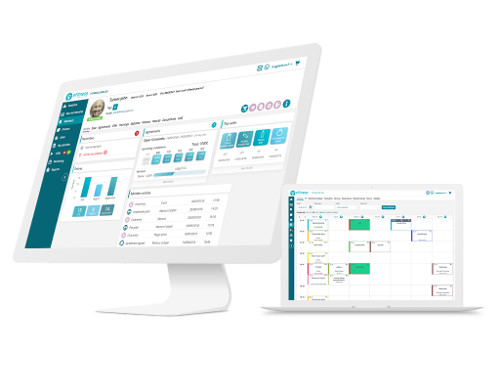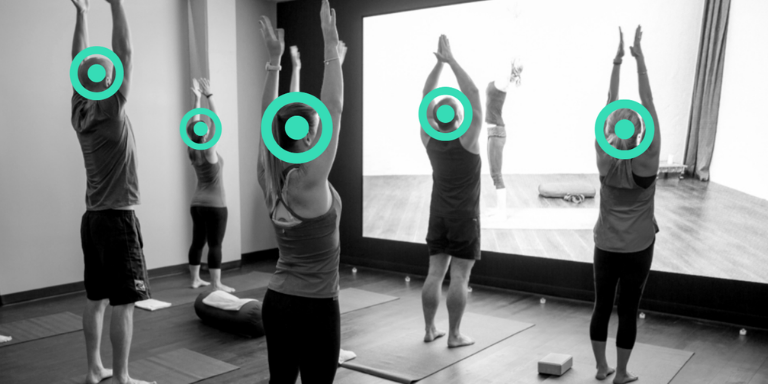What is the future of exercise? Will it be done in the gym or at home? What new devices will enter the market and will they go beyond measuring effort, heart rate, and calories burned? Will we start to see more devices that link up to your body, the machine you are using, and your phone, smart-watch or another wearable?
As digital technologies enter our lives, these questions become less surprising. Online classes and virtual workouts are certainly a noticeable trend too, so let’s take a closer look at whether this concept can really work in fitness clubs.
Digital technologies and club retention
According to Dan Kennedy, author of the book “The Ultimate Marketing Plan”, 5% of customers leave their fitness club due to a change in the Group Exercise Class. Changes often occur in order to freshen things up and usually to follow a particular fitness fashion, typically the classes with low occupancy levels tend to make way for new ones.
Further research shows that 9% of customers leave a Health Club because a competitor either has a lower price or a more interesting offering. Alongside this, survey results reveal that 5% of clients give up a Health Club, because they are influenced by their friends and family, who sometimes decide on a different place to exercise.
So how do you tackle all these problems using the latest technology?
One of the effective methods is to extend your offering, and this can be done with virtual classes. Here, customers can try out many new types of classes, they can work out to different music, and what’s more, they can access classes on-demand, whenever they like.
This means that if you as an Operator, decide to add Virtual Classes to your Group Exercise offering, you’ll stay above the competition and your members will always have plenty of options even when the timetable undergoes modifications. That’s not all, because virtual classes are available on-demand, it gives smaller groups the opportunity to arrange classes in their own time, meaning that friends and couples are likely to strengthen their exercise regime together and not want to make suggestions to train elsewhere.
Virtual classes and sales in the club
Virtual classes can certainly help your Health Club to attract new customers. By offering a wider range of classes which are available at all times, it makes your fitness facility more inviting and appealing for the consumer. Our research shows that Virtual Classes are not just good for attracting new members, but keeping existing ones happy too.
eFitness data shows that for current members, one of the main reasons they cancel their membership is due to the lack of spaces available for certain classes or the inappropriate hours at which they are held. Classes with a virtual trainer, at any time, without registration requirements, make such issues redundant, leading to clubs seeing greater satisfaction levels and retention among members.
Virtual club activities and cost reduction
Virtual classes allow optimal use of the space in the club. Typically, across the majority of gyms with Group Exercise classes, take the spinning room, for example, this is occupied from 1 to 5 hours during the day. Thanks to virtual classes, the room can be used all day long. Even if your Health Club doesn’t have a dedicated studio for classes, you can save some space elsewhere on the gym floor, such as the HIIT ZONE and hang the monitor on the wall. So if you want to maximize even square foot of space in your gym, go Virtual.
A selection of digital technologies for fitness clubs
Wexer is one of the largest online platforms, operating in over 50 countries with 24/7 virtual workouts available. The library of classes undergoes constant expansion, and there is something out there for everyone, regardless of their fitness level or workout preferences.
VirtuaGym is another Health Club solution that is available via an app on a member’s phone. It offers Health Clubs the opportunity to implement training and nutrition plans and allows members to monitor and track their workouts. Similar to the Wexer platform, the implementation of this technology is not complicated and is based on subscription fees.
One Peloton, which requires the use of an intelligent home bike or treadmill is one of the most interesting solutions. Here, home users can access high-energy workouts, instantly as fitness classes are streamed live and on-demand.
Although digital technologies are a trend, they are not as popular within the Polish fitness market. There are a whole host of benefits, and the range of available solutions is something for the largest gyms in Poland to consider. It is worth sampling with new solutions and making an effort to find out why so many clubs around the world are exploring virtual opportunities.
When asked if he has any advice for clubs, Paul Bowman, CEO of Wexer replied “Just start, the rest is technology. Make sure you have a good partner who thinks just like you and hit the ground running.”


